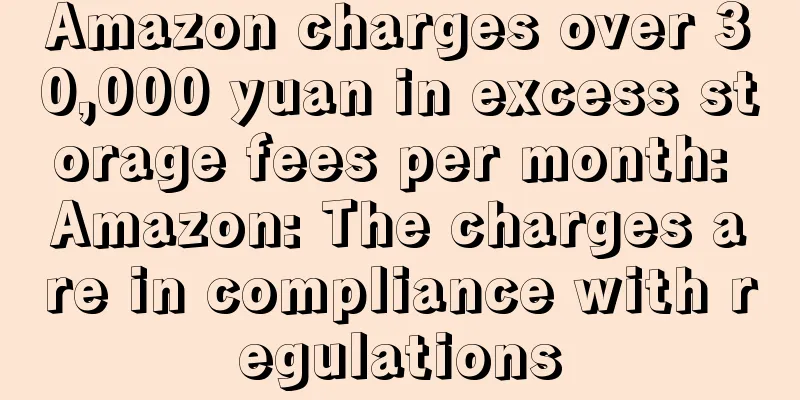What is Shopping Actions? Shopping Actions Review

On March 21, Google announced a new plan called "Shopping Actions": Google announced that it will cooperate with a number of retailers including Target, Walmart, Home Depot, Costco, etc., so that customers can easily add the products they intend to buy to the Google Express "universal shopping cart" through platforms such as Google Assistant and Google Search, thereby facilitating ordering and purchase. Launch time March 21introduceShopping Actions is a shopping feature that allows retailers to display product listings to consumers through platforms such as Google Search, Google Express shopping service and Google Assistant; Shopping Actions uses a pay-per-click model, which means that retailers do not need to pay additional advertising fees. For each product sold, Google will charge a percentage commission. Device SupportShopping Actions can be implemented on hardware devices of Google Search, Google Express and Google Assistant (including PCs, mobile phones, smart speakers, etc.). publicityGoogle has pitched the program as giving retailers a better channel to influence users' purchasing decisions, a move that would help them compete with rival Amazon. Feature Highlights1. Google's nine billion-level traffic pools boost sales and help merchants explore Google's front-end and middle-end traffic, including Google.com and YouTube; 2. Convert search traffic directly into purchases, allowing consumers to complete transactions directly on Google without having to jump to other sites, thus achieving a closed transaction loop; 3. Accept a variety of logistics methods, merchants have no inventory pressure, can ship from China warehouse, FBA or local warehouse in the United States, and there is no mandatory logistics time limit requirement; 4. 14-day rolling payment, every day you will receive payment for orders marked as shipped 14 days ago, alleviating the financial pressure on merchants; 5. Commission is only charged when the order is completed, there are no other hidden fees. Entry requirements1. Information required for the main body of a company in mainland China or Hong Kong to settle in: 1. Business license 2. Receive USD payments in a local U.S. bank account (accept Payoneer/Lianlian/PingPong Pay) 3. The W-8 document used by the resident entity to report to the U.S. Internal Revenue Service (IRS) 4. Merchants need to take care of their own logistics (logistics can be sent directly from China or the United States) 2. Information required for the U.S. company to settle in: 1. Identification documents issued by the US government, such as ID card, green card, driver's license, passport, etc. 2. Receive USD payments in a local U.S. bank account (accept Payoneer/Lianlian/PingPong Pay) 3. W-9 document used by the resident entity to report to the U.S. Internal Revenue Service (IRS) 4. Merchants need to take care of their own logistics (logistics can be sent directly from China or the United States) References
|
<<: What is Tumblr? Tumblr Review
>>: What is PingPong? PingPong Review
Recommend
What is Splitly? Splitly Review
Splitly is an Amazon operation tool developed by J...
US logistics will increase again? USPS announced a temporary price increase starting in October
As we all know, the increase in online logistics c...
Survey on American e-commerce platform online shopping! Here is the secret code for the next round of growth
It is learned that DigitalCommerce360 and BizrateI...
Get it for free! The 2024 Cross-border E-commerce Industry Annual Report is released
2024 is an extremely special year for the cross-bo...
Musk is preparing to file a plagiarism lawsuit against Zuckerberg for his Threads app
The competition between Twitter and Meta has reach...
What is DTAS? DTAS Review
DTAS is a payment solution provided by PriceChain ...
Big news! Amazon’s high return rate label policy is really here!
It is learned that recently, according to sellers,...
What is Shopee event selection? Shopee event selection related reviews
Shopee sellers participate in platform promotion a...
Great news! US FBA can now restock!
As of local time on the 26th, the number of confir...
What is Zhongpei International Logistics? Zhongpei International Logistics Review
Zhongpei Industry was established in 2004 with a t...
How many of Amazon’s cross-site “black technologies” do you know?
"Black technology" makes people love an...
What is a European Union Trademark? European Union Trademark Review
A European Union Trademark is a mark that is regis...
Pinduoduo Temu doubles salary to compete for operations, monthly salary of 40,000 but requires 996
On February 13, a Temu advertisement was shown at ...
What is Bullet Points? Bullet Points Review
Bullet Points refer to the key points of Amazon pr...
Amazon’s process for creating hit products—a must-read for newbies!
1. Create a keyword database: plan the keyword da...









